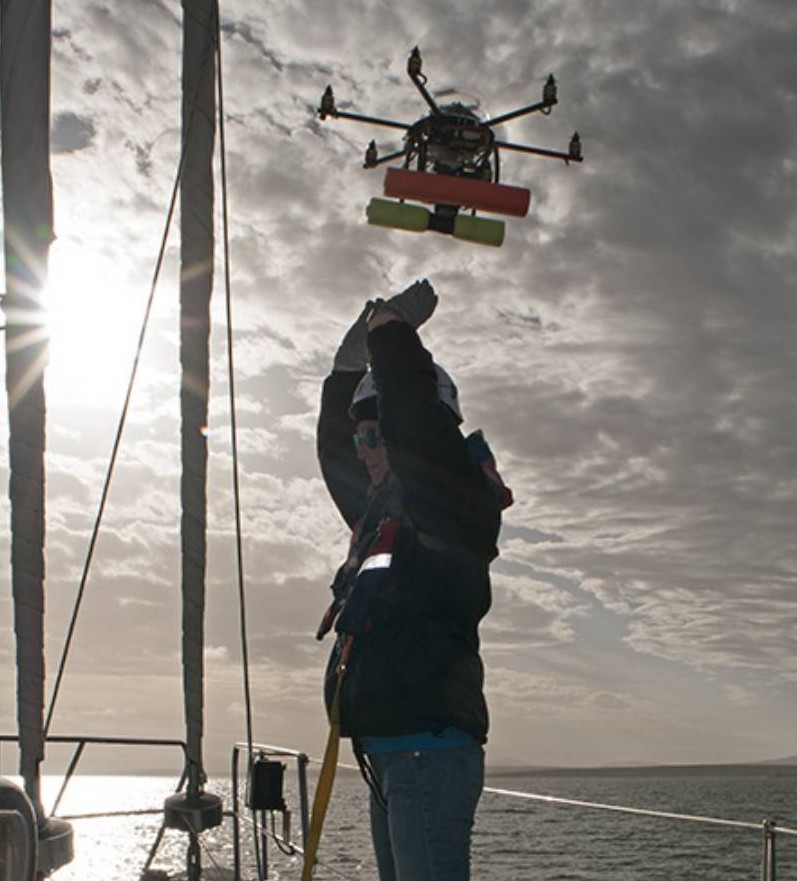
With all the scientific equipment sorted and stowed, last minute fresh provisions brought onboard and safety briefings completed, SOTW cast off from the dock in Stanley on 22nd January. The expedition involves a team of 11: Brian, Matt & Kirstin, the crew, and Jen, Susie, Russell, Amy, Emma, Matt, Artur and Emilie, the scientific team. The goal is to gather a variety of data and to place satellite tracking tags on whales, primarily Southern right whales, around South Georgia in the coming weeks.
It was mid-afternoon and the wind was the lightest it had been for days, around 10 knots from the east. We took the opportunity to spend a few hours in the outer harbour practising the tagging and biopsy procedures in calm water and flying the drones from the deck for the first time. Then, with the sun starting to sink behind us, we headed out into the Southern Ocean.
With light wind on the nose we were motoring into a moderate swell, which made for rather rolly conditions. Nonetheless, Susie, one of the acoustic experts, produced a delicious first underway dinner, a feast of pasta, lemon and zucchini which we enjoyed in the cockpit.
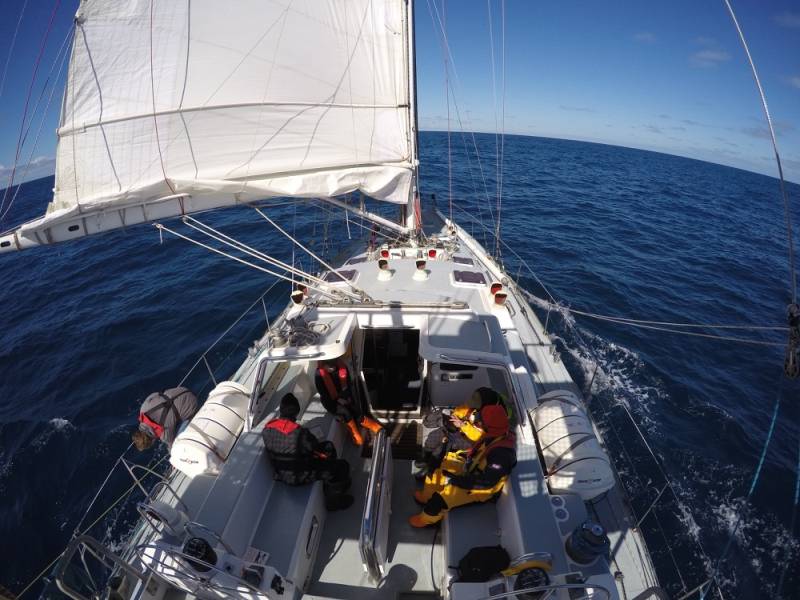
For the first few days the weather was unexpectedly calm and clear, with plenty of sunshine and fantastic night skies filled with brilliant stars. We settled happily into the onboard routine of watches and observations, although some of the team took a few days to find their sea legs. Visual surveys were conducted during daylight hours by two teams of three scientists doing 3-hour stints. Despite layers of thermals, fleeces and jackets, observers on the A-frame had to change every 40 minutes due to the cold and everyone consumed endless cups of tea! The main sightings were of hourglass dolphins. The hydrophone was deployed as soon as we left Stanley and monitored constantly by Russell and Susie, doing alternating watches of 12 hrs on / 12 hrs off.
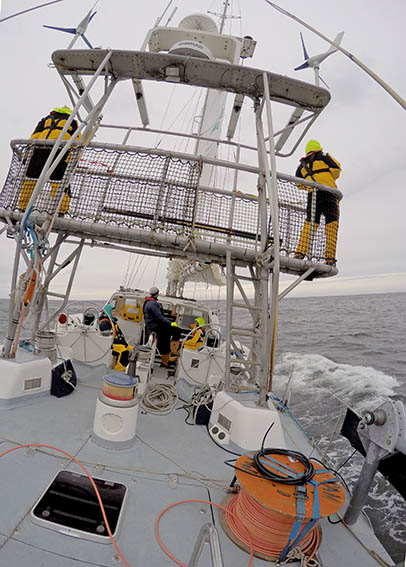
On the third morning out Russell and Susie deployed the first sonobuoy as a test. Developed by the military to locate submarines, our reconditioned sonobuoys comprise a hydrophone and magnetic compass which, when launched into the water, transmit signals back to the boat via VHF. The hydrophone detects low frequency cetacean vocalisations and the compass provides bearing information which indicates where the vocalising animals are. The first buoy immediately detected Antarctic blue whales far to the south east, perhaps near the Antarctic ice shelf about 500 miles away. Antarctic blue whales make very low frequency calls, between 26 and 19 Hz, which travel great distances underwater.
By day four the weather began to deteriorate, bringing more typical Southern Ocean conditions. As the wind picked up to F7 from the NW, rain and low clouds closed in. We gradually reduced sail to 3 reefs in the main and the staysail. Our hopes of stopping near remote Shag Rocks to search for Southern rights, which would require very settled weather, were abandoned in favour of pushing on another 100 nm to reach the edge of the shelf around South Georgia.
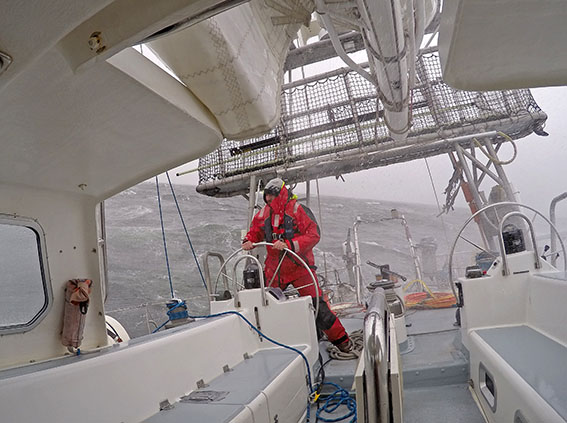
Here, the sea floor rises quickly from over 2000m deep to under 200m, creating productive regions of upwelling. Satellite data show that an area directly on our route currently has high chlorophyll concentrations, which normally results in a correspondingly high density of zooplankton such as copepods and krill, both important food sources for Southern rights. We timed our arrival to coincide with a brief period of calm weather to have the best chance of finding whales.
Another sonobuoy was deployed just after midnight and over several hours killer whales, fin whales and the distant Antarctic blue whales were detected – but no Southern rights. It was a beautiful dawn, with a bright orange sky and the jagged silhouette of South Georgia visible almost 40 miles away. From first light at about 0500 we were all scanning the water carefully for whale blows, but with no success.
All too soon the wind began to pick up from the ENE as forecast and the sea quickly built. Rain and drizzle reduced visibility to the point where observations were no longer worthwhile and we prepared for an uncomfortable beat into the increasing wind and sea. Having crossed the Antarctic Convergence, the water temperature had dropped to between 3 and 4 degrees C. It was a cold, wet night shouldering slowly into fairly large waves but the system moved fast and things began to ease before dawn.
I came on watch at 0600 to shouts of “Whale!” from the A-frame. Russell and Brian had spotted some humpbacks and soon all hands were on deck to log the sightings, observe behaviour and gather photo ID shots. There were 3 or 4 whales and we stayed with them for an hour or so. The visibility was often poor with frequent rain showers, making it harder to keep track of the whales.
Then the excitement level rose as a new blow was seen, a bushy V-shape with two quite distinct arms, almost certainly a Southern right. The ID was soon confirmed when we saw the whale surface. Southern rights have distinct white patches on their heads, called callosities, and no dorsal fin, making them quite easy to recognise. The pattern of callosities is unique to each animal and these can be used to identify individual whales.
Over the next few hours seven different Southern rights were photographed. A sonobuoy deployed when the animals were first sighted also detected their vocalisations. It was fantastic to watch them socialising and diving and it seemed an auspicious start to the project. As the swell continued to drop, Emma and Matt decided to try and obtain some biopsies, tiny samples of skin and blubber that can be collected by a small dart fired from a specially modified gun or crossbow. We approached various whales and they took a number of shots but each time we were either too far away or the whale was facing the wrong direction. It was good practice but also a reminder of the challenges ahead.
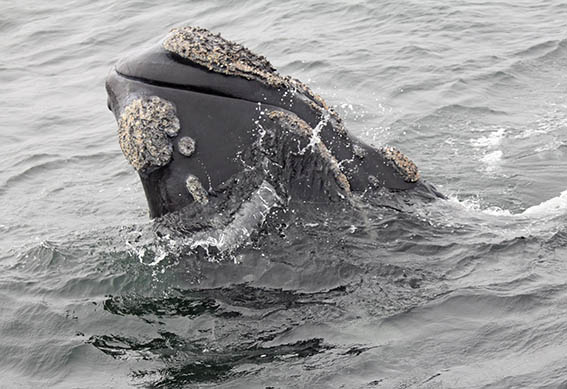
By late morning the wind was picking up again and the sea was soon flecked with white caps. Working on deck became quite difficult and it was time to head into Grytviken in Cumberland Bay where we were required to check in with the Harbour Master. We had a fast downwind run for the last 20 miles with the clouds shrouding the island clearing as we went. Seals and penguins porpoised around the boat.
South Georgia’s majestic snow capped peaks were revealed with glaciers winding down to the water and we were all thrilled at the sight. It was an amazing landfall.
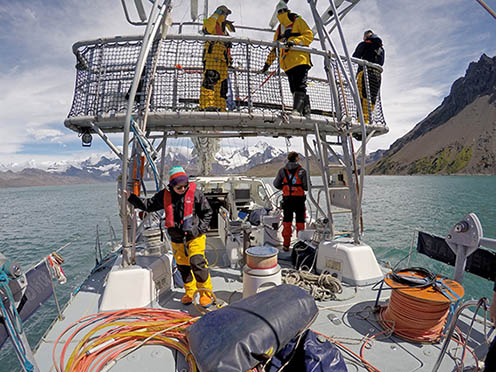
In the harbour we tied up at a wooden dock in the middle of the old Grytviken whaling station, surrounded by the rusting hulks of the machinery and ships used during the devastating whaling era, and awaited our official clearance. While it was great to arrive after a week at sea, we are a bit disappointed at the prospect of being stuck here longer than we would like. A huge depression is moving slowly across the south Atlantic bringing very strong NW winds. There will be no chance of getting any work at sea done and this bay is well sheltered, so we may be here some time…..
Kirstin.
Sorry, comments are closed for this post.